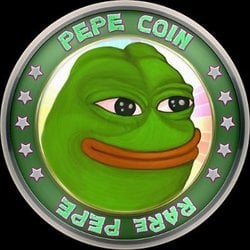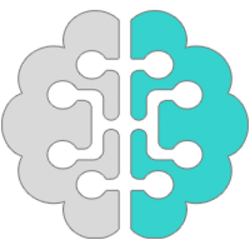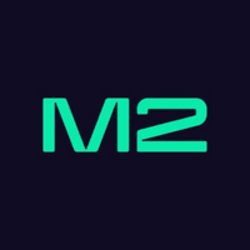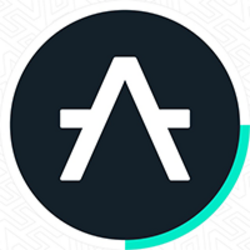
- IOTA is a distributed ledger technology designed for the Internet of Things (IoT).
- Unlike most cryptocurrencies, IOTA uses Tangle instead of a traditional blockchain to confirm transactions.
- IOTA is designed to be lightweight and scalable, making it suitable for resource-constrained IoT devices.
What Is IOTA (IOTA)?
IOTA is a distributed ledger designed for the Internet of Things (IoT). The project aims to be a lightweight, scalable, and fee-less solution for microtransactions in the vast network of devices within the IoT. It is a complex technology, and while it offers exciting potential, it is still under development, and some aspects need to be addressed before achieving its full vision.
How Does IOTA (IOTA) Work?
IOTA operates differently from traditional blockchains used by cryptocurrencies. Here’s a breakdown of how the project works:
The Tangle
Imagine the Tangle as a web of interconnected transactions, unlike a blockchain with linear blocks. New transactions are not added to the end of a chain, but instead attach themselves to two previously approved transactions within the Tangle.
Transaction Validation
To validate their transaction, users must approve two previous transactions in the Tangle. This approach eliminates the need for miners and transaction fees.
Coordinator (For Now)
Currently, IOTA utilizes a coordinator, a central node that helps prevent spam and ensures the validity of the Tangle. However, the IOTA Foundation’s vision is to transition to a fully coordinatorless network eventually.
Lightweight Transactions
The Tangle is designed to be lightweight, allowing devices with limited processing power, which is standard in the IoT world, to participate in the network.
Here’s a more detailed explanation of some key aspects:
Tangle Transactions – When a new transaction enters the Tangle, it attaches itself to two previously approved transactions. This creates a web of interconnected transactions that validate each other.
Coordinator’s Role – While not ideal for decentralization purists, the coordinator helps prevent spam and ensures the Tangle’s overall health during its current development stage.
IOTA 2.0 & Beyond – The IOTA 2.0 upgrade introduced smart contracts and is a stepping stone towards a coordinatorless future. The IOTA Foundation is working on improvements to make the Tangle more secure and scalable without relying on a central coordinator.
IOTA (IOTA) Token And Tokenomics
Tokenomics
The IOTA token is used for the following:
- Facilitates microtransactions between devices
- Fee-less transactions
- Powers the Machine Economy
- Rewards network participants
Token Details
Total Supply 4,600,000,000 IOTA
Circulating Supply 3,229,505,319 IOTA
Current Price $0.2199
Market Capitalization $710,243,184
This information is current as of April 30th, 2024, and the token’s price, market value, and available supply may fluctuate.
Distribution
IOTA’s token distribution significantly changed with the IOTA 2.0 upgrade, codenamed Stardust, in October 2023. Here’s a breakdown of the recent distribution:
- IOTA Foundation (7.075%)
- Tangle Ecosystem Association (12%)
- UAE Entity (12%)
Contributors (5%) - IOTA Airdrop (3.5%)
Where Can I Buy IOTA (IOTA)?
Binance – Binance is a major exchange offering a wide range of cryptocurrencies. It offers multiple ways to buy crypto, including credit cards, debit cards, and peer-to-peer (P2P) trading.
KuCoin – KuCoin is a smaller exchange known for its competitive fees and support for many cryptocurrencies.
Gate.io – This exchange provides IOTA, other cryptocurrencies, and margin trading options.
Is IOTA (IOTA) A Good Investment?
Pros
- First Licensed Crypto Fund – IOTA became the first crypto fund licensed by Abu Dhabi Global Markets (ADGM).
- Dedicated Ecosystem Fund – The IOTA Foundation launched a 100 million dollar fund that will be replenished over four years. This fund will actively invest in protocols within the IOTA network, advancing the development of the entire ecosystem.
- EVM Compatibility – IOTA achieved full compatibility with the Ethereum Virtual Machine (EVM) in Q1 2024. This allows protocols built on Ethereum and its Layer-2 scaling solutions to interact with the IOTA network, potentially attracting liquidity from those established DeFi ecosystems.
- Potential Staking – With EVM compatibility, IOTA paves the way for potential staking collaborations with other projects. Locking a portion of the token supply in smart contracts for staking could positively impact the price by reducing circulating supply.
Cons
- IOTA Staking Is Still Speculative – The possibility of IOTA staking with EVM compatibility is promising, but details and timelines are not yet confirmed.
- Smart Contract Functionality – While IOTA 2.0 introduced smart contracts, they are still under development compared to the more mature functionality offered by platforms like Ethereum.
- EVM Compatibility Is Still New – IOTA’s recent achievement of EVM compatibility is a positive step. However, it’s still too early to say how effectively it will attract liquidity and projects from the Ethereum ecosystem.
Final Thoughts
Whether IOTA (IOTA) is a good investment depends on your risk tolerance and goals. Remember, this guide only provides a starting point for your research. Always conduct your due diligence before making any investment decisions.












































































Be the first to comment